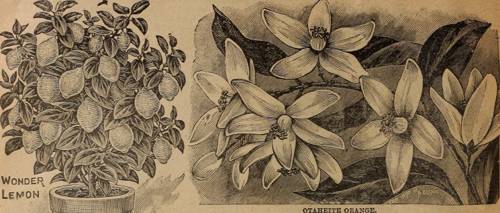
FAQ About Indoor Citrus Tree Cultivation

What are the best citrus varieties for growing indoors?
When selecting citrus varieties for indoor cultivation, consider dwarf or miniature varieties as they are better suited for smaller spaces. Some popular choices include Calamondin Orange, Meyer Lemon, Kumquat, and Key Lime. These types are known for their adaptability to indoor conditions and producing fruits even in less optimal lighting.

How much sunlight do indoor citrus trees need?
Indoor citrus trees require a significant amount of light to thrive. Ideally, they should receive about 8-12 hours of bright, indirect sunlight per day. If natural sunlight is insufficient, consider supplementing with grow lights. Positioning them near a south-facing window typically provides adequate light exposure.

What soil is best for indoor citrus trees?
Citrus trees grown indoors prefer well-draining soil. A potting mix that includes peat, perlite, and sand is ideal, as it allows excess water to escape and prevents root rot. Consider using a mix specifically formulated for citrus or general fruit trees for optimal growth.

How often should I water my indoor citrus tree?
Watering frequency for indoor citrus trees depends on several factors, such as humidity, light, and pot size. Generally, water when the top inch of the soil feels dry. Citrus trees prefer consistent moisture, but overwatering can lead to root rot, so ensure proper drainage is in place.

What temperature range is ideal for indoor citrus tree growth?
Citrus trees are sensitive to temperature changes, with an ideal range of 55-85 degrees Fahrenheit. Avoid placing your tree near drafts or heat sources like radiators that might exceed this range. Maintaining stable conditions will help in encouraging healthy growth and fruit production.

Do indoor citrus trees need pruning?
Yes, pruning is essential for indoor citrus trees to maintain their shape and health. Prune annually to remove dead or overcrowded branches and to manage the size of the tree. This practice promotes air circulation and sunlight penetration, vital for fruit production.

Is it necessary to fertilize indoor citrus trees, and if so, how often?
Fertilization is important for healthy growth and productivity in indoor citrus trees. Use a balanced, water-soluble fertilizer specifically designed for citrus or fruit trees, typically every 6-8 weeks during the growing season (spring through fall). Read the label instructions carefully to avoid over-fertilization, which can harm the tree.

How can I encourage my indoor citrus tree to bear fruit?
To promote fruiting on your indoor citrus trees, ensure that the plant receives adequate sunlight, is properly watered and fertilized, and temperatures are stable. Hand pollination can also help; gently transfer pollen with a brush from one flower to another if pollinators are not present indoors.

Can indoor citrus trees be affected by pests, and how should they be treated?
Indoor citrus trees can be susceptible to pests such as spider mites, aphids, whiteflies, and scale. To treat infestations, wipe the foliage with soapy water, use insecticidal soaps, or neem oil when necessary. Regularly inspect your plant for signs of pests to catch problems early.

What signs indicate that an indoor citrus tree is unhealthy?
Common signs of distress in indoor citrus trees include yellowing leaves, wilting, leaf drop, and poor fruit production. These symptoms may indicate improper watering, inadequate light, nutrient deficiency, or pest infestations. Addressing the underlying issue promptly can help restore the tree’s health.

How large do indoor citrus trees typically grow?
Indoor citrus trees vary in size, typically reaching heights of 4-6 feet depending on the variety and care conditions. Dwarf varieties are especially suited for indoor environments as they remain more compact. Regular pruning helps maintain manageable sizes within limited indoor spaces.

Can I move my indoor citrus tree outside during warm months?
Yes, you can move indoor citrus trees outdoors during warm months, but make sure to acclimate them gradually to prevent stress from sudden environmental changes. Begin by placing them in a shaded area and slowly increasing their sun exposure over the course of a week or two.

What container size is appropriate for indoor citrus trees?
Choosing the right container size for indoor citrus trees is crucial. Start with a pot that is at least 12 inches in diameter and has ample drainage holes. As the tree grows, you may need to transfer it to a larger pot, allowing for root expansion while avoiding root-bound conditions.

Can citrus trees grow indoors year-round?
Yes, citrus trees can be grown indoors year-round, provided they receive adequate care. They need substantial sunlight, correct watering, temperature control, and regular fertilization to produce fruit. Indoor cultivation allows protection from extreme weather conditions that may occur outdoors.

What are the common diseases affecting indoor citrus trees?
Indoor citrus trees can suffer from diseases such as root rot, citrus canker, and greasy spot. To prevent disease, ensure proper drainage, avoid overwatering, and maintain good air circulation around the plant. Regular inspection can help in early detection and treatment.

How can I manage humidity levels for my indoor citrus tree?
Indoor citrus trees prefer higher humidity levels than typically found indoors, especially during winter when heaters are in use. To increase humidity around the tree, consider using a humidifier, misting the leaves regularly, or placing a tray of water near the tree.

Should I be concerned about the indoor air quality when growing citrus trees?
Citrus trees can help improve indoor air quality as they absorb carbon dioxide and release oxygen. However, they may be sensitive to pollutants like tobacco smoke and excessive dust. To maintain air quality, ensure proper ventilation and clean the leaves occasionally.

Can I grow citrus trees from seeds indoors?
It is possible to grow citrus trees from seeds indoors, though it can be challenging and time-consuming. Seed-grown trees may take several years to mature and produce fruit. Purchase starter plants for quicker fruit production, especially when space and light conditions are limited.

Do indoor citrus trees require special care during winter?
During winter, indoor citrus trees may require adjustments in care. Keep them away from drafts and ensure they still receive ample light, possibly with grow lights. Reduce watering frequency if the growth rate slows, and maintain a temperature range conducive to their health.

How can I tell when fruits from my indoor citrus tree are ready to harvest?
Fruits on indoor citrus trees are typically ready to harvest when they reach their full color and size specific to the variety. Additionally, they should feel firm but slightly yielding to the touch. Taste testing is the most accurate method to ensure optimal timing for picking.
